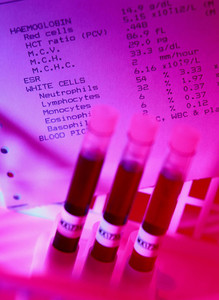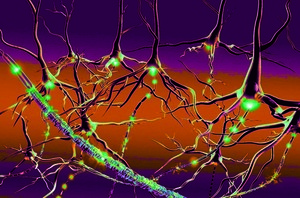In this article [1], US Food and Drug Administration (FDA) scientists give a comprehensive overview of the nanomaterials presently available in the US and the challenges encountered when considering approval of generic (or follow-on) versions of these often complex drug products. More specifically, these challenges encompass ‘establishing active ingredient sameness, equivalence in the drug product physicochemical properties and equivalence in thein vivodrug exposure profiles between innovator and generic drug products’.
Interestingly, FDA has not adopted a formal definition of nanotechnology but the list of products discussed in the text covers nanomaterials with particle sizes in the range between 1−1,000 nm.
Oral nanomedicines
For establishing bioequivalence between the follow-on products and their reference versions, conventional pharmacokinetic studies in human subjects are considered sufficient for applicants using a similar nanotechnology formulation approach. Applicants should refer to the FDA guidance on ‘Bioequivalence studies with pharmacokinetic endpoints for drugs submitted under an ANDA’ [2] and product-specific recommendations for bioequivalence study design and requirements of orally administered drug products [3].
Parenteral nanomedicines
The majority of prescription drugs containing nanomaterials are for parenteral use. The regulatory paradigm recommends the follow-on product to be qualitatively and quantitatively (Q1 and Q2, respectively), the same, following a two-pronged approach: 1) establishing equivalence in physicochemical terms, and 2) ‘in vivobioequivalence studies to demonstrate equivalence in systemic availability, drug exposure in relevant biometric or clinical efficacy endpoints’.
‘In these parenteral nanomaterials, the active ingredient is either encapsulated in a nanocarrier, e.g. liposomal drug products, or in a complex form at a nanosized scale, e.g. iron-carbohydrate complex. After parenteral administration, the active ingredient may appear in different forms, e.g. free drug versus encapsulated drug, at different sites, e.g. systemic circulation versus target tissues/organs, in the human body. Systemic availability of a specific form alone may not represent the true exposure to the active ingredient at the site of action. Bioequivalence evaluation should be based on a solid understanding of the mechanism of action and drug release, and analyzed on a case-by-case basis’.
Finally, the article discusses ‘regulatory gaps’ between the approval processes of generic/follow-on nanomedicines for FDA and the European Medicines Agency (EMA). EMA takes a different position than FDA regarding the (im)possibility of a full physicochemical description of nanomaterials. Therefore, EMA prefers the term ‘similar’ where FDA uses the ‘same’ copy of the brand-name product.
The authors encourage pharmaceutical firms to continue to discuss major scientific hurdles related to the evaluation of follow-on products (nanomaterials) with FDA via pathways such as ‘controlled correspondences’ and pre-ANDA meetings. An open industry–regulator communication channel should lead to the development and approval of affordable, equally effective and safe generic/follow-on nanomaterial drugs.
Disclaimer This article reflects the views of the authors and should not be construed to represent the FDA’s views or policies.
Conflict of interest
The authors of the research paper [1] did not provide any conflict of interest statement.
Related article
Follow-up studies needed to ensure safety for follow-on NBCDs
References
1. Zheng N, Sun DD, Zou P, Jiang W. Scientific and regulatory considerations for generic complex drug products containing nanomaterials. AAPS J. 2017 May;19(3):619-631.
2. US Food and Drug Administration. Guidance for industry. Bioequivalence studies with pharmacokinetic endpoints for drugs submitted under an ANDA [homepage on the Internet]. [cited 2017 May 5]. Available from:
www.fda.gov/downloads/drugs/guidances/ucm377465.pdf
3. GaBI Online - Generics and Biosimilars Initiative. US guidelines for follow-on NBCDs [www.gabionline.net]. Mol, Belgium: Pro Pharma Communications International; [cited 2017 May 5]. Available from: www.gabionline.net/Non-Biological-Complex-Drugs/Guidelines/US-guidelines-for-follow-on-NBCDs
Permission granted to reproduce for personal and non-commercial use only. All other reproduction, copy or reprinting of all or part of any ‘Content’ found on this website is strictly prohibited without the prior consent of the publisher. Contact the publisher to obtain permission before redistributing.
Copyright – Unless otherwise stated all contents of this website are © 2017 Pro Pharma Communications International. All Rights Reserved.








 0
0











Post your comment